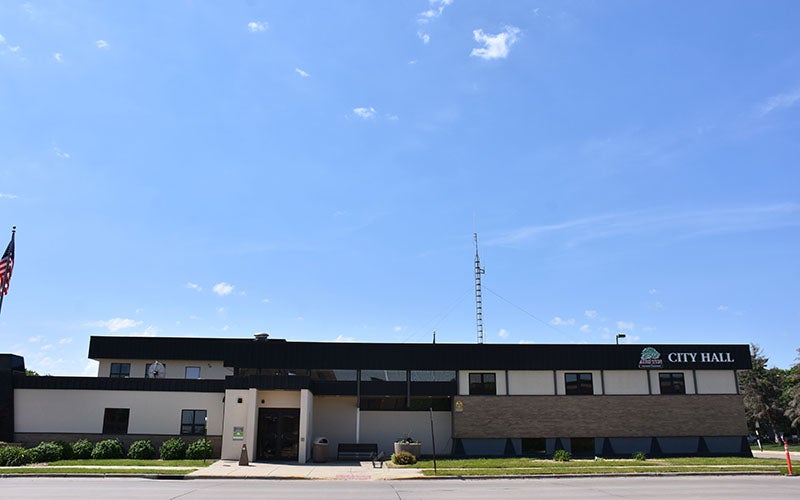Officials weigh in on LGA proposals, implications
Published 10:50 am Sunday, May 3, 2015
Imagine Austin without as many police to patrol the streets, or firefighters to respond to fires.
City leaders here and around Minnesota are concerned lawmakers could make that thought a reality if a House proposal to limit local government aid for large cities trumps a Senate proposal to increase LGA funding by $45.5 million during the final weeks of the state legislature’s session.
Government officials, lobbyists and political experts say the issue is likely a smaller part of the ongoing political struggle between Republicans and Democrats.
“Playing political games with a program that really keeps a key focus on our core services isn’t a good thing for Minnesota,” Austin City Administrator Craig Clark said.
Each proposal is part of the House and Senate omnibus tax bills, respectively.
The House proposal caps aid given to so-called “first class” cities such as Minneapolis, St. Paul, Duluth and Rochester based on population and residents per capita, which would end up cutting about $85 million in total from LGA. Only Rochester would be unaffected by the funding shift, and LGA levels would largely freeze for other cities.
In contrast, the Senate proposal would add $45.5 million to LGA, which would bring aid funding up to its 2002 levels.
That would mean a sizable aid increase for Austin. The city received $7,958,149 in LGA funding last year, an increase of about $80,000 from 2013. Under the Senate proposal, Austin would receive about $8.1 million this year and $8.3 million in 2016.
That money goes toward salaries for key public employees such as police, firefighters and public works employees. With Austin officials looking to add employees over the next few years to maintain its services — five departments want to hire additional workers in 2015 — the city hopes for increased funding from the state.
“Just like we talk about roads and bridges being infrastructure for our community, LGA is part of the infrastructure for staffing,” Clark said. “LGA is part of the structure for the city.”
Statewide view
After Republicans took control of the House during the 2014 elections, many politicians called the 2015 legislative session the session for Greater Minnesota. Republican wins in outstate House seats including Albert Lea meant the state’s political system became even more of a struggle between rural and urban interests.
“Now what’s happened is the parties have sorted,” Larry Jacobs, political science professor at the University of Minnesota, said. “You’ve got the DFL that’s increasingly metro and the GOP which represents Greater Minnesota. In a way, LGA has become kind of a symptom of the new regional parties.”
Rep. Duane Quam, R-Rochester, introduced the proposal to cap LGA funding in March as part of a set of bills to shift funding from LGA to statewide water and housing programs. Quam hoped to get larger cities to find more efficiencies instead of relying on state aid. At the same time, he wanted to address increasing wastewater and water pipe concerns with a loan program for longterm projects, and a similar program for urban renewal construction.
“Any government program after a decade or more really needs to be heavily looked at,” Quam said. “People need to stop being afraid of starting from scratch.”
However, representatives only passed his LGA proposal, not his water and housing ideas.
Outstate officials and lobbyists say they haven’t seen enough focus on Greater Minnesota issues, including LGA funding.
The Coalition of Greater Minnesota Cities criticized the House LGA proposal last week and called for more support for the Senate’s omnibus tax bill.
“There’s no question that we support the Senate proposal,” said Dan Dorman, executive director of the Greater Minnesota Partnership, a fiscally focused offshoot of the coalition. “Frankly, we’re very surprised that it wasn’t included in the original House tax bill.”
St. Paul Mayor Chris Coleman also launched a publicity blitz statewide in support of the Senate plan. Coleman, lobbyists and other city officials say initial cuts to LGA for top-tier cities that pay more into LGA could mean future cuts for communities across Minnesota.
“It’s kind of a divide-and-conquer scenario that pits Minneapolis, St. Paul and Duluth against other cities,” Coleman said. “Again, today they’re coming after us. Who’s to say they don’t come after Rochester or Austin, pick your city.”
Future funding
Few observers believe LGA cuts will be part of the state’s budget over the next two years. Gov. Mark Dayton has already dismissed the House proposal and Dorman believes the cuts were passed to shore up support from fiscally concerned lawmakers.
“I don’t think anybody expects those cuts to survive, so the question will be did that maneuver take away the potential for [LGA] increases,” he said.
What’s more, LGA and other funding concerns will likely become campaign fodder next year as Republicans try to paint Democrats as more concerned with metro issues than rural matters.
“There’s clearly a concerted political and policy shift that Republicans are executing,” Jacobs said. “We should expect this to be very prominent in the next election.”
Yet municipal leaders hope lawmakers listen to the demand for increased LGA funding as costs rise.
“When you think of core, critical purposes for the city, that’s what LGA is for,” Clark said.
What is Local Government Aid?
Local government aid was created in the 1970s to offset the divide between larger and smaller city services. In essence, LGA distributes state aid according to a formula that includes a city’s population, household size, number of jobs per capita and other factors, depending on the size of a given city. In addition, a city’s previous LGA funding level is considered when calculating aid payments.
“It evens those things out across the state so we can enjoy some of the same basic services that they have in more affluent services,” Austin City Administrator Craig Clark said.
Though LGA funding has steadily increased since the 1970s, the so-called “Minnesota Miracle” has become a sore point in the legislature since the turn of the century. LGA funding peaked in 2002 before then-Gov. Tim Pawlenty cut funding to balance the state’s budget throughout his term.
In turn, cities such as Austin have made cuts as their budgets decreased. Over the past 25 years, the city of Austin decreased from more than 180 employees to about 135 employees in 2012. Austin has 139 employees as of this year.
Municipal officials across the state have long lobbied for more LGA funding, especially in Greater Minnesota. The DFL-controlled Legislature redid aid formulas in 2013 to give more funding to cities and counties.
Yet some legislators have tried to find other solutions that would decrease local dependency on state aid. Rep. Duane Quam, R-Rochester proposed a cap on LGA funding for first-tier cities earlier this year. His bill is already included in the House omnibus tax bill and, if passed, would cut about $85 million in aid to Minneapolis, St. Paul and Duluth.
Though Quam proposed the idea along with two other infrastructure-related bills — in essence, to shift funding from local aid to municipal infrastructure programs to be used statewide — he also admits he proposed capping LGA funding in part to raise a discussion on how legislators could better fund programs.
“Certainly, it did cause discussion,” he said.




